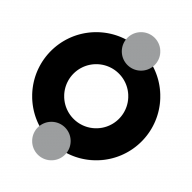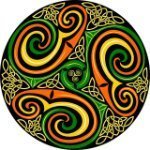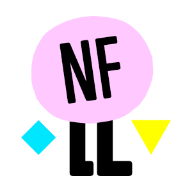-
Posts
482 -
Joined
Reputation Activity
-
 Bryan Rieger got a reaction from Paul Mudditt in USDZ file support
Bryan Rieger got a reaction from Paul Mudditt in USDZ file support
Apple just released an update to their Pages app which now supports place USDZ files within a Pages document. At first, I though “yeah, that's something absolutely nobody needs” but after downloading a couple of samples from Apple's Developer site and embedding them within a Pages document my mind started spinning.
First you could resize these assets to whatever size you required, but you can also rotate them to whatever perspective you require. Furthermore, you can also wrap text around the object (see screenshot below) and have it update when you change the position or rotation if the object.
As more and more products and brands are using 3D assets today, it would amazing to be able to work with these files directly within the Affinity apps and have them rendered to bitmap at the appropriate resolution (and colour space) on export. I could also see it opening up some wonderful illustration possibilities.
Anyway, it's not a small undertaking, but it's something that could prove very interesting (and useful) for brands in the coming years.
Addendum
Yes, I'm aware you can essentially do the same thing with a 3D model in Photoshop and then take it into InDesign, but having native support for these modern file format(s) (glTF would be another) within Affinity could really open up the Affinity suite to new possibilities (and markets).
-
 Bryan Rieger got a reaction from Paul Mudditt in USDZ file support
Bryan Rieger got a reaction from Paul Mudditt in USDZ file support
Possibly, but not necessarily. Pages doesn't have "3D support" per se, but rather the ability to embed, render and manipulate (in a very basic manner) these assets. It can't actually manipulate the objects themselves, alter geometry, change materials, lighting, etc (that would need to be done in Blender, Maya, Cinema4D, etc), but it can set basic parameters of the 'scene'; position, rotation, and scale—most of which (with the exception of 3D rotation) are common to any Pages display element.
-
 Bryan Rieger reacted to NathanC in Stroke width inconsistent between appearance panel and stroke panel.
Bryan Rieger reacted to NathanC in Stroke width inconsistent between appearance panel and stroke panel.
Hi @Bryan Rieger,
Thanks for reporting, I've replicated and logged this with the developers, it looks like the Appearance panel stroke width value is not correctly updating.
-
 Bryan Rieger got a reaction from MoonaticDestiny in Ability to lock insertion target
Bryan Rieger got a reaction from MoonaticDestiny in Ability to lock insertion target
Oof — even more modifier keys to try to remember, with the iPad ones being even more unintutive..
-
 Bryan Rieger got a reaction from Old Bruce in CMYK Colour differences between InDesign and Publisher
Bryan Rieger got a reaction from Old Bruce in CMYK Colour differences between InDesign and Publisher
@loukash OMG thank you. I have no idea how the 10% K values snuck in with the Publisher colours, but now that I've fixed that everything looks as expected.
I hate Mondays (especially the mornings) and I definitely need more coffee.
-
 Bryan Rieger got a reaction from loukash in CMYK Colour differences between InDesign and Publisher
Bryan Rieger got a reaction from loukash in CMYK Colour differences between InDesign and Publisher
@loukash OMG thank you. I have no idea how the 10% K values snuck in with the Publisher colours, but now that I've fixed that everything looks as expected.
I hate Mondays (especially the mornings) and I definitely need more coffee.
-
 Bryan Rieger got a reaction from ronnyb in Character and Paragraph Panels, mouse scroll wheel
Bryan Rieger got a reaction from ronnyb in Character and Paragraph Panels, mouse scroll wheel
I’d rather have the panels scroll than the input fields as I’m constantly having values change as I move my mouse around the UI. It’s definitely one of the more annoying behaviours I deal with in the Affinity apps everyday.
-
 Bryan Rieger got a reaction from Westerwälder in Ability to lock insertion target
Bryan Rieger got a reaction from Westerwälder in Ability to lock insertion target
Oof — even more modifier keys to try to remember, with the iPad ones being even more unintutive..
-
 Bryan Rieger got a reaction from deepblue in Slow start up (All Affinity apps)
Bryan Rieger got a reaction from deepblue in Slow start up (All Affinity apps)
And yet it’s only the Affinity apps that are affected in this way, as lots of other large universal apps reliably start up in seconds.
-
 Bryan Rieger reacted to Bit Disappointed in Ability to lock insertion target
Bryan Rieger reacted to Bit Disappointed in Ability to lock insertion target
Dear @Ash,
Thank you for the update addressing several requested features. I have some feedback. It seems that some assumptions are based rather theoretically on the notion that your customers follow very uniform workflows, such as top-down approaches. While I utilise the entire range of insertion targets, it's not done mechanically or consistently in consecutive steps. For me, it's not a (semi)permanent setting, but more like an ad hoc setting that I need to use maybe 10-20-30 times in a row.
If I were German, I might describe my method as "An auf hinter in neben über unter vor zwischen" 🙂
Having the 'insert inside' as a permanent option for a while is not at all pointless. True, it could become a bit recursive like digging a well if one is working on the same object, but that's not necessarily the case. In my work, I would enable it because the next round of additions to an illustration involves inserting inside a variety of different objects. A permanent setting would allow me to start grouping such actions and organise my workflows into themed steps, rather than jerkily changing the insert target each time. It's quite disruptive.
So the lack of alt-clicking on insert inside is actually blocking me from working my way. When you have to actively click alt+icon to activate insert inside as a permanent setting, you can assume we know what we're doing. 🙂
This leads me to the iPad, where the insertion target is hidden away in the edit menu and not readily accessible from the toolbar, probably based on the assumption you described. I had a feeling it would end up there because the assumption is that it's seldom used. But for me, that's not the case, so its location in the edit menu is incredibly inconvenient.
Moving on to the tablet interface, it's a bit of an issue in itself to talk about keyboard shortcuts on a tablet. 🙂 In general, the Affinity tablet interface leans (too) heavily on desktop logic, especially with this horseshoe of toolbars and associated keyboard shortcuts ad libitum. It's necessary to have these, but the primary assumption should be that the customer doesn't have a keyboard on an iPad, and tablet UI logic must be smartest. The Command Controller is just a software implementation of four physical keys. The journey into a top menu with submenus is very desktop-like and quite slow. I'm really missing local and dynamic choices, where one can quickly select functions with a finger or pen, and where the dynamics mean the interface folds away and doesn't obstruct, leaving screen space for work.
There are plenty of great apps out there to draw inspiration from for methodology.
Thanks for reading this far. 🙂
-
 Bryan Rieger reacted to Ash in Layer states added to Designer and Publisher plus changes to functionality
Bryan Rieger reacted to Ash in Layer states added to Designer and Publisher plus changes to functionality
Yes agreed - I noted briefly on the post but we do intend to add the ability to save presets in a future update (but that will be after 2.4 release). Also to set up more complex rules based on multiple queries (e.g. in the example I gave in the OP you could set up a smart state which says "Turn all layers which fulfils EN query on AND turn all layers which fulfil DE query off AND turn all layers which fulfil JA query off". i.e. so in a single click you could get to your English version.
-
 Bryan Rieger reacted to Ash in Ability to lock insertion target
Bryan Rieger reacted to Ash in Ability to lock insertion target
Actually we are looking at long press on iPad be the alternate way to activate it - that would be consistent with other alt-click operations on iPad such as either long pressing or alt-clicking "Add" creates a non-destructive compound.
-
 Bryan Rieger reacted to Ash in Layer states added to Designer and Publisher plus changes to functionality
Bryan Rieger reacted to Ash in Layer states added to Designer and Publisher plus changes to functionality
Apps: Designer and Publisher (+ some changes to the existing feature in Photo)
Platforms: Windows and macOS
We have now added the States panel to Affinity Designer and Affinity Publisher which previously only existed in Affinity Photo. Layer states allows you to either:
Capture the current visibility states of your layers across your document Create queries based on various criteria to use to make a selection or toggle visibility of layers This feature is particularly useful to manage different variations of your work. As an example, one of the social ad campaigns for our recent Black Friday promotion was created in Affinity Designer across multiple artboards. Each artboard had 4 variants for English, Japanese, German and French language.
Previously if you wanted to toggle between the English and French version for example you would need to toggle the visibility of the appropriate layers on each artboard separately - not particularly workable when you have many artboards / spreads. The new states panel gives you a new way to work with designs like this.
In this case I could set up a query with criteria which captures all my Japanese layers. From the states panel click "New Query" at the bottom, I called the query "JA" and set up my criteria to be "All Art Text and Frame Text layers that have a layer name which ends in JA" as below:
Because on each artboard we had used the consistent naming convention that all Japanese text has a layer name ending in JA, all English text has a layer name ending in EN, etc. it made it easy to then set up 4 queries for each of the languages. We could alternatively have used a convention like all French variants are tagged yellow, English tagged Red, etc.
So now to switch from English to Japanese across all artboards I can just turn off everything that fulfils my EN query, and turn on everything which fulfils my JP query using the visibility on/off buttons next to the queries in the states panel - so in two clicks end up with the below:
While this example is only including text, of course I may have had different imagery for each locale and could have included those in the same queries to still have one button to toggle text and images of each language on and off. Also, as it's set up a query like this, should I add additional Japanese specific layers to any of the artboards and name them ending in "...JA" my JA query will automatically pick them up.
In Publisher the same principles apply giving the ability to globally toggle different layers on and off across all spreads in your document which match the criteria you have specified. While building complex expressions is easy, you may also find you wish to have a query for something simple like "Layer Type is Images" giving you an instant way to turn all images on and off across your whole document.
Additional Notes
As well as toggling visibility of queries there is an additional button to make a selection of all layers which fulfil the criteria specified in the query. This is also a new function not previously available in Affinity Photo. For those who used the States panel in Affinity Photo you will notice we have changed the name of what were previously called "Smart States" to "Queries". This reason for this is in the future we anticipate adding a new feature to this which would be better described as a Smart State (this will be something you can build from multiple queries). This will be something which we add in a future update. There is other new functionality we plan to bring to this in the future - namely ability to create presets and some level of integration with export options - but again that will be something for a future update.
-
 Bryan Rieger reacted to Ash in Size / Rotate objects to same
Bryan Rieger reacted to Ash in Size / Rotate objects to same
Apps: All
Platforms: Windows, macOS and iPad
Within alignment options you will see three new options to make all items in your current selection adopt the same width, height or rotation. By default this will transform all objects to match the first item selected, or alternatively if a key object has been nominated (alt-click) it will use that as the source.
Additionally you can choose to maintain the aspect ratio of the objects being resized.
On desktop this is available via the alignment dropdown:
And on iPad via the alignment options panel which you can get to via the transform panel:
-
 Bryan Rieger got a reaction from d952g in Variable fonts support
Bryan Rieger got a reaction from d952g in Variable fonts support
To expand on what @walt.farrell said, SVG can also use variable fonts in contexts that support it (such as modern browsers), using font-variation-settings. FWIW Illustrator does a really poor job of supporting this and I always end up going in and editing it by hand.
<?xml version="1.0" encoding="UTF-8"?> <svg id="Layer_1" data-name="Layer 1" xmlns="http://www.w3.org/2000/svg" viewBox="0 0 640 480"> <defs> <style> @font-face { font-family: 'Maru'; src: url("./maru.woff2") format("woff2-variations"); font-weight: normal; } .variable { font-family: 'Maru'; font-size: 48px; font-variation-settings: 'wght' 400, 'wdth' 200, 'ital' 0; } </style> </defs> <text class="variable" transform="translate(68.48 239.83)">This is a variable font.</text> </svg>
-
 Bryan Rieger got a reaction from walt.farrell in Styles not propagated to other Affinity apps on macOS.
Bryan Rieger got a reaction from walt.farrell in Styles not propagated to other Affinity apps on macOS.
My settings (below) have 'Link new content categories' unchecked (I've never checked it). I'm on macOS.
-
 Bryan Rieger got a reaction from Hangman in Styles not propagated to other Affinity apps on macOS.
Bryan Rieger got a reaction from Hangman in Styles not propagated to other Affinity apps on macOS.
Ah ha, you have to have a document open for the Link Category to become active. You can do everything else in that menu without an active document, but Link Category is the exception. I still think it should be the default behaviour much like brushes.
-
 Bryan Rieger reacted to Patrick Connor in 2.3.0 to be released this morning!
Bryan Rieger reacted to Patrick Connor in 2.3.0 to be released this morning!
We are planning to release a 2.3.1 patch to address a handful of important things and then start 2.4.0 beta.
We think it's important to address a few high customer impact bugs quickly in a 2.3.1 release, in a fast/stable manner.
The release of 2.4.0 with improvements and features and many fixes will likely take a while to be "release ready" (need a longer beta testing cycle due to having more significant code changes).
We have builds for both 2.3.1 and 2.4.0 in internal testing at the moment. I would expect these to both be with you in the first half of this month
-
 Bryan Rieger got a reaction from nicolasfolliot in Character and Paragraph Panels, mouse scroll wheel
Bryan Rieger got a reaction from nicolasfolliot in Character and Paragraph Panels, mouse scroll wheel
I’d rather have the panels scroll than the input fields as I’m constantly having values change as I move my mouse around the UI. It’s definitely one of the more annoying behaviours I deal with in the Affinity apps everyday.
-
 Bryan Rieger reacted to MikkelJP in Character and Paragraph Panels, mouse scroll wheel
Bryan Rieger reacted to MikkelJP in Character and Paragraph Panels, mouse scroll wheel
I completely agree with this statement. Anything that has a scroll bar should be scrollable by default and anything else should require direct engagement.
As a Mac user; scrolling on values is practically useless because Affinity has such a hard time interpreting my mouse anyway.
-
 Bryan Rieger got a reaction from handbooklab in Unexpected Feature: Vectorize a Bitmap Image Directly in Publisher
Bryan Rieger got a reaction from handbooklab in Unexpected Feature: Vectorize a Bitmap Image Directly in Publisher
I think this thread perfectly illustrates how one person's bug is another person's feature. Personally, I cringe every time I have to use the text wrap alpha feature in Publisher as I always end up having to go and delete 99% of the nodes and then redraw the shape (incl. curves) with a more reasonable node count which then allows me to tweak the shape to get the wrapping to work better. I'm always amazed at @loukash's ability to find endless (and ingenious) workarounds in the Affinity suite.
Hopefully we see improvements to both auto-trace tool and node/geometry clean-up tools in the not-too-distant future. 🤞
-
 Bryan Rieger reacted to MmmMaarten in Please add a Highlight in the Layers Panel on where to find the Currently Selected Layer
Bryan Rieger reacted to MmmMaarten in Please add a Highlight in the Layers Panel on where to find the Currently Selected Layer
Since (one of the last versions of?) v2 I often see myself searching for the currently selected layer and need to open each and every layer group just to find the layer I'm in, because it doesn't highlight where the layer is at. I don't believe I ever experienced this in v1.
Please see video below. How to know where the layer is?
So Please add a (blue) highlight to the layer the currently selected layer is inside!!
(BTW When working with large files a search option to find a layer by its name would be pretty useful too, but that's another thing)
Using Windows 11 Pro, Affinity Designer 2.3.0
[edit] I see now that the screenrec. isn't showing the full screen. But believe me I scrolled through all the layers in the video
unable-to-find-layer.mp4
-
 Bryan Rieger reacted to Old Bruce in AI in Affinity
Bryan Rieger reacted to Old Bruce in AI in Affinity
Mmmm... Cake....
Oh, and speaking of candles, a friend of mine pointed out that "non-toxic" is just another way of saying "edible".
Mmmm... Cake and Candles....
Ow, Ouch... It burns.
-
 Bryan Rieger reacted to JET_Affinity in Suggestion: Rebrand Point Transform Tool to 'Scale Tool' or similar
Bryan Rieger reacted to JET_Affinity in Suggestion: Rebrand Point Transform Tool to 'Scale Tool' or similar
"…but not if you press shift"
So?? It doesn't scale if you press Ctrl {Windows} either. But without pressing a modifier key it both scales and rotates in one move. So how would "scale" be a more appropriate name than "transform"?
Look; I'm all for intuitive and consistent terminology. And I've been at this for a while, too. I cut my vector-drawing teeth in Altsys Fontographer—the progenitor of FreeHand, before Illustrator even existed—on a Mac Plus. But egads, man, there's no real issue in this instance. Dear departed Aunt Mollie would call this "straining at a gnat to swallow an elephant".
For a real interface terminology issue, look no further than the current abuse of the "Pages" (or Artboards) and "Layers" terms. What is intuitive about starting a new document which displays a working area that certainly looks like a page, drawing an ellipse on that 'non-page', and having the ellipse immediately listed in a Panel named "Layers" in which there are no Layers (or Pages)? Since when is a single ellipse a 'Layer'? This is supposed to be intuitive terminology convention? But we should take issue with "Point Transform Tool"?
Illustrator is historically one of the worst about needlessly renaming its so often late-to-the-game constructs and features that existed long before in competing programs. Calling pages 'artboards' and nodes 'anchor points'. Its utterly needless and wordy 'Convert Anchor Point Tool'. Starting the whole now pandemic 'necessity' for two primary selection tools—the second of which is awkwardly named the 'Direct Selection Tool'—when FreeHand's elegant single selection tool performed all the functionality of both, more efficiently, intuitively, and capably. Adobe should hardly be considered the authoritative preferred 'dictionary' for best feature naming.
So yes, I quite agree that words mean things. But functionality still trumps. The functionality of the Point Transform Tool addresses crucial omissions that stem from having only bounding box handles for common transformations: being able to rotate paths by their nodes, so as to intuitively snap them to paths and nodes already drawn. Before the Point Transform Tool, that was a serious failing relative to Illustrator. It's actually a bit of a new wrinkle and more elegant and accurate than the corresponding functionality in Illustrator.
Pen Tool: Draw three arbitrarily-shaped open paths; one near the upper left corner of the page; one near the lower right; and one in the middle. Your goal is to scale and orient the middle path—without distorting its shape—to perfectly fit between two arbitrary nodes; one on the upper left path and one on the lower right path. Point Transform Tool: Select the middle path. Mousedown on one endNode of the middle path. Drag and snap it to the target node on the upper left path. Drag the Transform Center and snap it to that same node. Mousedown on the other endNode of the middle path. Drag and snap it to the target node on the lower right path. Done. Tell me how you would do that as quickly and intuitively in Illustrator with one tool. "…do we need a [term like] 'Point Transform Tool' that…makes little semantic sense to most people?"
Yes! We need different terms for interface elements that are significantly different treatments of similar functionality in other programs, so that we know they're not just another re-packaged 'me, too' identical copycat treatment of same-old market-dominating (and progress stifling) programs like Illustrator.
I cringe every time I see users in forums like this demand "We must have a [insert Illustrator's term] tool in Affinity!", as if Illustrator's cluttered, confused, scattered, and often mediocre treatment is the ultimate de facto thing to emulate. Affinity is opportunity to finally advance 2D bezier drawing beyond the mediocrity of Illustrator. But it won't get there by just thoughtlessly demanding identical treatment from such long-in-the-tooth programs without putting at least a little thought toward how it might be done better.
-
 Bryan Rieger got a reaction from deepblue in Slow startup (all Affinity apps)
Bryan Rieger got a reaction from deepblue in Slow startup (all Affinity apps)
Just for the record, there are other, (much) larger universal apps (Ableton, Adobe, Unity, etc) that don’t have this problem at all. The Affinity apps are the only apps that I’ve experienced this problem with.









